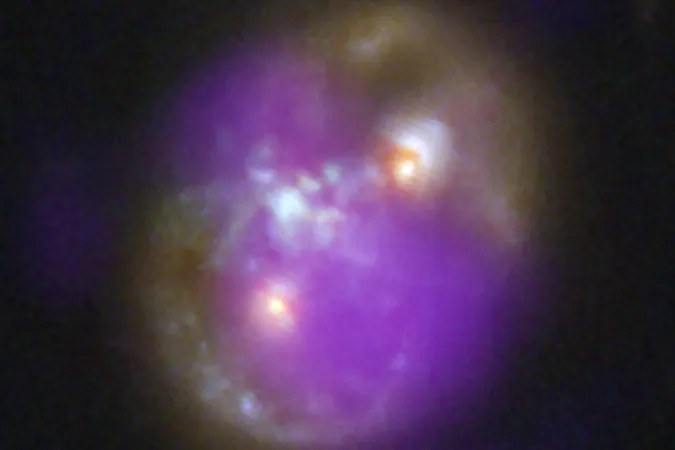
Unveiling Superhuman Sight: Scientists Create Revolutionary Infrared Contact Lenses
2025-05-22
Author: Noah
Transforming Vision with Innovative Technology
Imagine seeing beyond the ordinary! A groundbreaking scientific advancement has made this a reality as researchers unveil contact lenses that grant wearers the ability to see infrared light—a segment of the electromagnetic spectrum that's completely invisible to the naked eye.
No Batteries Required: A Transparent Vision Experience
Unlike cumbersome night vision goggles, these lenses require no external power source. Their transparent design allows users to perceive infrared alongside the visible spectrum—essentially enhancing their vision without sacrificing the colors of the everyday world.
Pioneering Research Opens New Doors
Led by Prof. Tian Xue at the University of Science and Technology of China, this innovative work sets the stage for a variety of future products—including glasses and wearables that could significantly enhance human vision. Not only does this technology promise to alter the way we see, but it also holds the potential to assist those with color blindness.
A Glimpse Beyond Human Limitations
The initiative stems from a desire to push the boundaries of human vision, which currently only captures less than one percent of the full electromagnetic spectrum. As Dr. Yuqian Ma highlights, over half of solar radiation exists as infrared light, remaining undetectable to the average person.
How It Works: The Magic of Upconversion Nanoparticles
To achieve this impressive feat, scientists harnessed the capabilities of upconversion nanoparticles, which absorb infrared light and convert it into visible wavelengths. These particles effectively transform light from areas that humans cannot discern into recognizable colors such as red, green, and blue.
From Mice to Humans: Evolution of the Technology
In earlier studies, researchers successfully granted mice near-infrared vision, but opted for a more user-friendly method for humans by embedding these nanoparticles in soft contact lenses. Participants could even detect Morse code signals emitted by an infrared LED, proving the technology’s effectiveness.
Limitations and Future Goals
While the current model does not allow for thermal vision or the perception of natural infrared levels, the researchers are committed to enhancing these lenses further. Xue expressed optimism that improved nanoparticles with higher efficiency could enable routine infrared vision through contact lenses.
Potential Applications: A Hidden World Revealed
Even in its nascent stage, the implications are vast. For instance, secret messages conveyed via infrared light will be visible solely to users of these revolutionary lenses. Furthermore, this technology could significantly aid those with color blindness by transforming unseen wavelengths into visible light.
The Future of Vision is Here!
As we stand at the frontier of these remarkable advancements in vision technology, the prospect of enhancing human perception continues to expand. Stay tuned—the world of sight is about to get a major upgrade!









 Brasil (PT)
Brasil (PT)
 Canada (EN)
Canada (EN)
 Chile (ES)
Chile (ES)
 Česko (CS)
Česko (CS)
 대한민국 (KO)
대한민국 (KO)
 España (ES)
España (ES)
 France (FR)
France (FR)
 Hong Kong (EN)
Hong Kong (EN)
 Italia (IT)
Italia (IT)
 日本 (JA)
日本 (JA)
 Magyarország (HU)
Magyarország (HU)
 Norge (NO)
Norge (NO)
 Polska (PL)
Polska (PL)
 Schweiz (DE)
Schweiz (DE)
 Singapore (EN)
Singapore (EN)
 Sverige (SV)
Sverige (SV)
 Suomi (FI)
Suomi (FI)
 Türkiye (TR)
Türkiye (TR)
 الإمارات العربية المتحدة (AR)
الإمارات العربية المتحدة (AR)